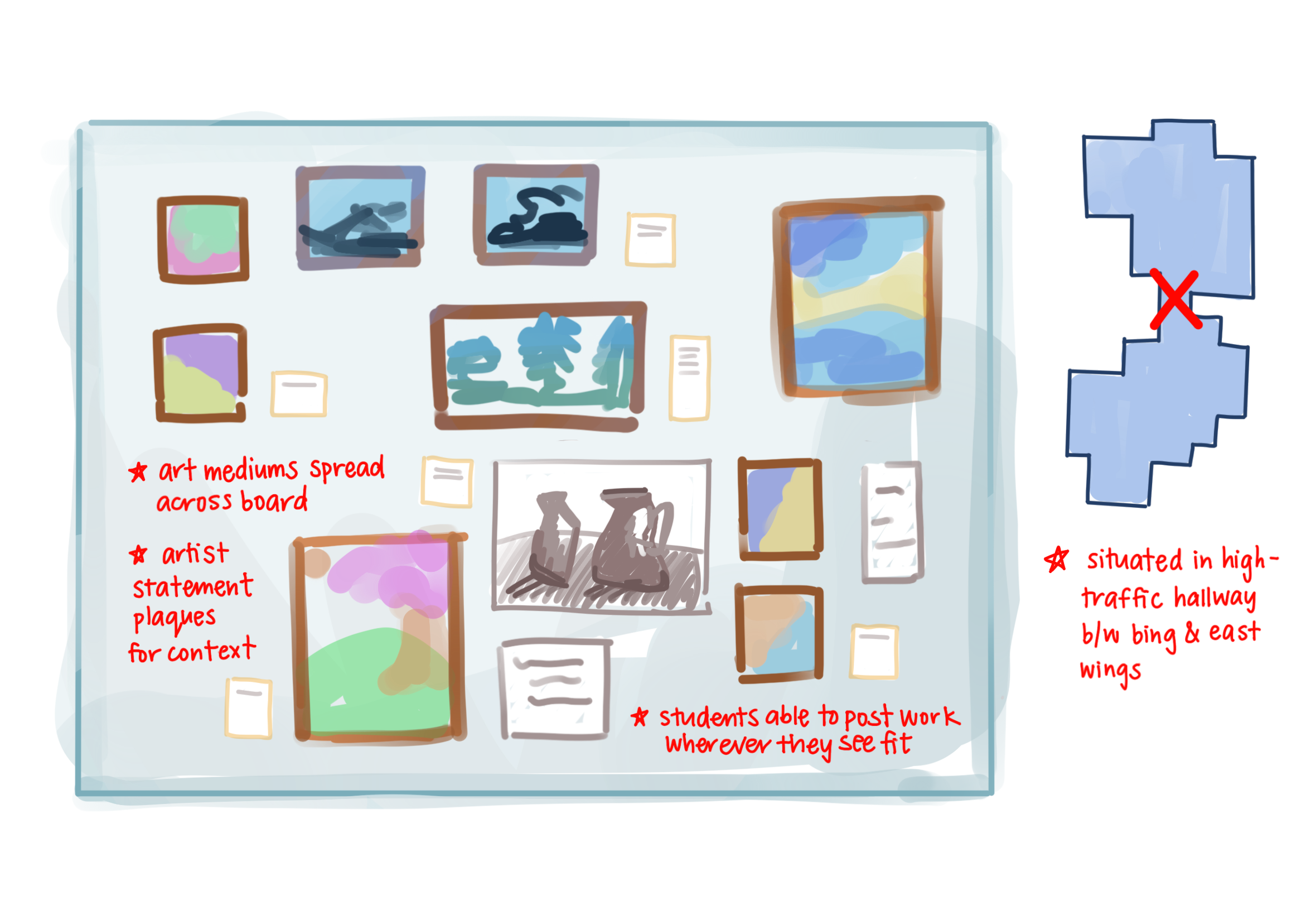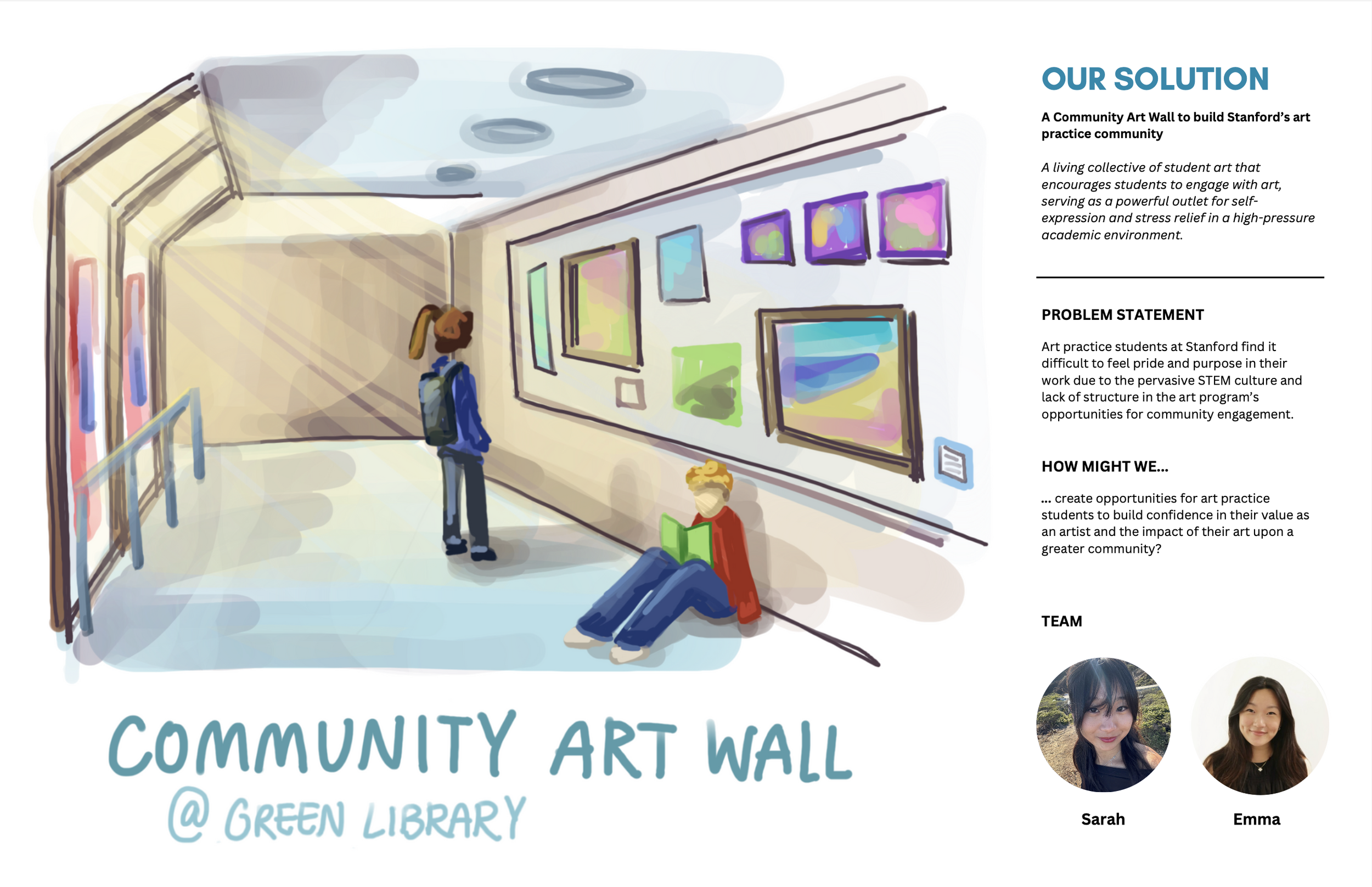CANVAS OF
COMMUNITY
COURSE:
DESIGN 1: Introduction to Design
TEAM:
Sarah Park, Emma Zhao
TOOLS & SKILLS:
Procreate, Canva, Needfinding, Iterative Design
TIMELINE:
Fall 2024, 2 weeks
The Assignment:
How can we better understand a community in order to meaningfully support it?
This project combined design research and qualitative analysis to explore this question within Stanford’s art community. Through a series of user interviews and community surveys, we identified key opportunities to strengthen connection among student artists. Using these insights, we prototyped a community art wall—an open, evolving space for creative expression and shared inspiration.
Ultimately, the project brought together needfinding and iterative design to create a tangible way for artists to feel more seen and connected.
Once we identified our user group, we conducted interviews with three Stanford art practice students and synthesized their insights into user personas to guide our design process.
A few key themes emerged from these conversations: a lack of centralization in the art program, limited accessibility to resources, and a desire for stronger student unity.
These themes became the basis of our decision-making principles, which we used to narrow over 50 possible solutions—ranging from small interventions to larger structural ideas—down to a list of ten. Finally, we conducted a competitive analysis to evaluate potential impact, helping us identify the three most promising concept to further develop.
After presenting our top ideas in small groups and gathering feedback, we chose to move forward with the community art wall—an idea that consistently resonated with students. People were especially drawn to its low barrier to entry, its ability to showcase a wide range of student voices, and its immediate positive impact on all library-goers.
We developed the concept further by prototyping a small-scale test version with a pilot group, and made several iterations based on their responses. The final result was a living collective of student art that served as an outlet for self-expression and stress relief in a high-pressure academic environment.















